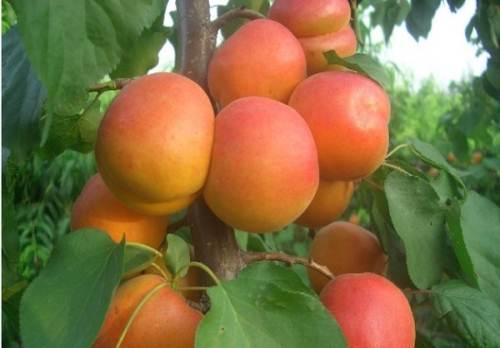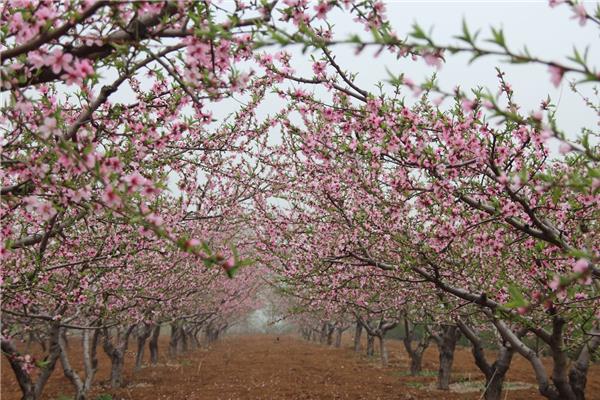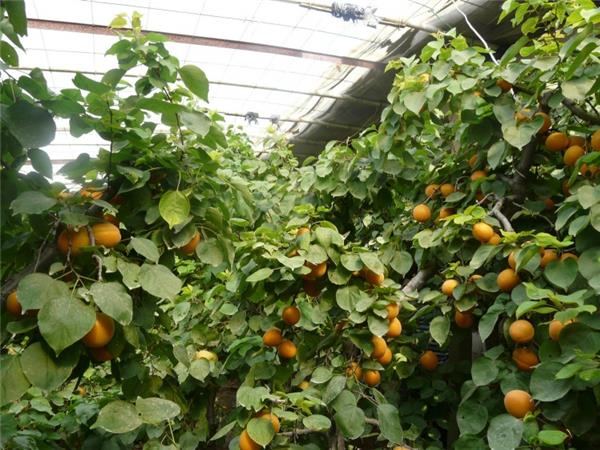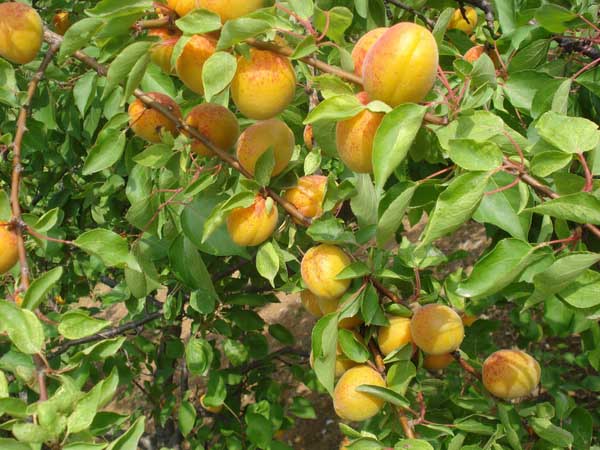What is the basis for ensuring the healthy growth of apricot trees?
Apricot is a kind of fruit tree species with strong adaptability, and it is also a kind of tree species with high ornamental value, but in order to ensure its healthy growth, it is necessary to master some technical knowledge in culture.

I. basic culture methods of apricot trees
1. Propagation method: the advantages and disadvantages of grafting technology are shown in the smoothness of the interface cutting surface and the speed of grafting. The cutting surface is not smooth or the cambium of the rootstock is not aligned, so that the cambium of the rootstock can not be in close contact, the wound healing speed will slow down or can not heal, even if the healing will also affect the growth of the scion, the occurrence of late germination, weak growth, easy to split and so on. When grafting, the surface of the scion should be trimmed, the rootstock and the cambium of the scion should be aligned, and the plastic strips should be tightly wrapped to ensure a firm interface.
two。 Basic maintenance: after apricot grafting, timely watering to ensure the supply of water in the scion. According to the growth speed of the stem, untie it in time to ensure the nutrient supply of apricot. Wipe buds and remove sprouts at any time so as not to cause excessive loss of nutrients and affect the growth of grafted seedlings. When the new branches growing on the scion are about 20 meters long, measures should be taken to fix the branches to prevent them from being broken by the wind. Cut off the dense and delicate twigs to facilitate the ventilation and light of the tree. The cultivated tree shape is beneficial to the hanging fruit of apricot trees.

2. The method of shaping and pruning apricot trees
1. Young tree pruning: the main task of young tree pruning is shaping, according to the tree shape configuration, cultivate the main branch, maintain the strong growth potential of the main branch, and control the development of other branches. The elongated branch of the main side branch is cut short every year, and the crown is constantly expanded. In general, the strong branches are cut lightly and the weak branches are cut heavily, and the cutting amount is appropriate to cut off the original branches.
two。 Pruning of the first fruit tree: pruning all levels of main and lateral branches, leaving full outer buds lightly truncated or truncated, and continuing to expand the crown; remove erect competitive branches, over-dense branches and internal cross branches on the backbone branches; non-backbone branches, mediocre branches and even new overgrowing branches in the crown can be truncated or slowly truncated appropriately without affecting the backbone branches to promote the fruit branch group.
3. Pruning of trees in full fruiting period: all levels of main lateral branches and backbone branches should still be cut short, and the amount of cutting should be controlled at 1pm, 3pm and 2pm, so as to promote the formation of new branches. Remove the very weak branches and dead branches in the middle and upper part of the crown, leave strong branches, and cut short if there are long fruit branches. Pay attention to raising the angle of the branches around the crown in order to enhance the tree potential and make proper use of the overgrown branches on the back of the main branches to cultivate the fruiting branches.
4. Pruning of aging trees: after the apricot trees enter the aging period, the growth potential of apricot trees is weak, the growth of new shoots is small, and the fruiting parts are seriously moved out. the main task of pruning in this period is to renew and rejuvenate all kinds of backbone branches and fruiting branches.

3. Apricot varieties suitable for protected cultivation
1. Golden sun apricot: American variety, the average single fruit weight is 66.9 grams, the largest fruit weight is 87.5 grams, the fruit face is golden yellow, smooth and beautiful, the pulp is free from the core, delicate and juicy, good quality, anti-cracking fruit, more resistant to storage, protected cultivation can mature in the middle of April. Strong adaptability and resistance, strong self-fruiting strength, high yield.
two。 Greenhouse king apricot: its maturity is 5-7 days later than that of Jinyang apricot. It is a new variety of extra-precocious European apricot, with an average fruit weight of more than 125g and a maximum fruit weight of 200g. It has high fruit setting rate, early and excellent quality, high and stable yield, strong adaptability, and is very suitable for greenhouse cultivation.
3. Kate apricot: originated in the United States. The fruit is nearly round and extra-large, with an average single fruit weight of 105.5 grams and a maximum of 138grams. The pericarp is orange and red on the sunny side. The flesh is orange, the flesh is fine, the juice is rich, the flavor is sour, sweet and refreshing, the aroma is strong, the quality is high and so on. Protected cultivation matured in late April. The variety has strong tree nature, vigorous growth of young trees, fast crown expansion, moderate tree potential in full fruit period, high yield and stable yield.

All right, the above is a full introduction to apricot trees. Here, I would like to remind you again that in the process of building apricot trees, we must take different construction measures according to its growth period. Otherwise, it will not increase its fruit setting rate, but will cause harm to the apricot tree itself.
Related
- Wuhan Hospital Iron Tree Blooming Result Was Instantly Frightened by the Gardener Master
- Which variety of camellia is the most fragrant and best? Which one do you like best?
- What is the small blue coat, the breeding methods and matters needing attention of the succulent plant
- Dormancy time and maintenance management of succulent plants during dormancy
- Minas succulent how to raise, Minas succulent plant pictures
- What are the varieties of winter succulent plants
- How to raise succulent plants in twelve rolls? let's take a look at some experience of breeding twelve rolls.
- Attention should be paid to water control for succulent plants during dormant period (winter and summer)
- Watering experience of twelve rolls of succulent plants
- Techniques for fertilizing succulent plants. An article will let you know how to fertilize succulent plants.



